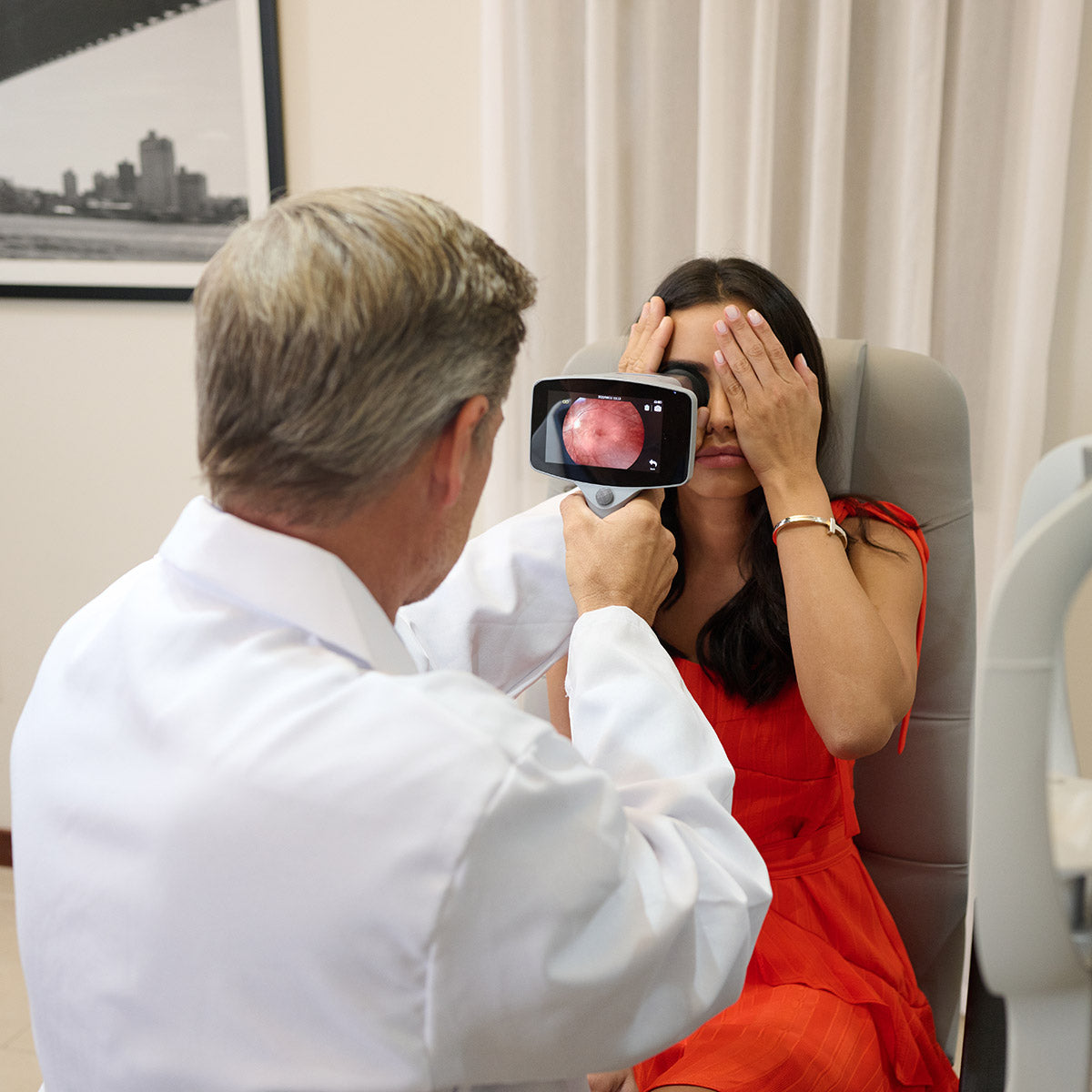"Seeing Beyond the Eye: The Power of Retinal Imaging in Early Detection of Neurological and Endocrine Pathologies"
This blog post, entitled "Seeing Beyond the Eye: The Power of Retinal Imaging in Early Detection of Neurological and Endocrine Pathologies" highlights the importance of using retinal imaging as a diagnostic tool for early detection and diagnosis of a range of neurological and endocrine conditions. The post discusses the specific conditions that can be diagnosed through retinal imaging, including diabetic retinopathy, multiple sclerosis, and Alzheimer's disease. The benefits of early detection, such as more effective treatment and improved patient outcomes, are emphasized. The post also underscores the accessibility and non-invasiveness of the procedure, as well as the potential benefits of incorporating retinal imaging into patient screening protocols in various healthcare settings. Overall, this blog post provides a valuable resource for neurologists and endocrinologists, highlighting the diagnostic benefits of retinal imaging and its potential to improve patient care and outcomes.
 |
The human eye is often referred to as the "window to the soul," but it can also serve as a valuable tool for early diagnosis of a wide range of neurological and endocrine pathologies. Retinal images, in particular, have proven to be a valuable resource for neurologists and endocrinologists, providing important insights into the health of the body beyond the eye itself.
Diabetes is a prime example of a condition that can be diagnosed through retinal imaging. High blood sugar levels can cause damage to the small blood vessels in the retina, leading to a condition called diabetic retinopathy. Early detection of this condition through retinal images can help endocrinologists manage the patient's diabetes and prevent further damage to the eye.
|
 |
But diabetes isn't the only condition that can be detected through retinal images. A range of neurological pathologies can also be diagnosed through this non-invasive imaging technique. Multiple sclerosis, for example, can be detected through changes in the thickness of the retinal nerve fiber layer, while Alzheimer's disease has been linked to thinning of the retinal nerve fiber layer and a decrease in the thickness of the ganglion cell layer.
Other conditions that can be diagnosed through retinal imaging include pituitary tumors, optic neuropathies, and idiopathic intracranial hypertension, among others. In many cases, early detection through retinal images can lead to more effective treatment and better outcomes for patients.
|
 |
As neurologists and endocrinologists, it is important to be aware of the potential diagnostic benefits of retinal imaging. Incorporating this technique into your diagnostic toolkit can help you identify conditions earlier, leading to more effective management and better patient outcomes.
|
 |
In addition, retinal imaging is a non-invasive and relatively simple procedure, making it an attractive option for both patients and practitioners. By simply taking a high-resolution image of the retina, doctors can gain important insights into a patient's overall health, particularly when it comes to the nervous and endocrine systems.
|

Patient screening through retinal imaging is an excellent practice that can be implemented in a variety of healthcare settings, including medical centers, family doctor's offices, clinics, and hospitals. By screening patients for retinal pathologies, medical professionals can identify potential neurological and endocrine disorders early on, allowing for timely treatment and management.
In many cases, these pathologies are asymptomatic in the early stages, making screening through retinal imaging all the more important. By using this technique to screen patients, doctors can catch potential issues before they progress to more serious stages, ultimately improving outcomes and reducing the burden on the healthcare system.
Moreover, patient screening through retinal imaging is a relatively simple and non-invasive procedure that can be performed quickly and easily in an outpatient setting. This makes it an accessible option for patients of all ages and backgrounds, and it can be particularly beneficial for those who are at higher risk of developing certain conditions.
|
 |
Incorporating retinal imaging into patient screening protocols is a proactive step that can have a significant impact on patient health and well-being. It is an important tool for preventative medicine, helping to catch and manage potential health issues before they become more serious.
|

So whether you are a neurologist or an endocrinologist, or work in a medical center, family doctor's office, clinic, or hospital, consider implementing patient screening through retinal imaging into your practice. By doing so, you can provide your patients with the best possible care and contribute to the overall health and well-being of your community.
|






